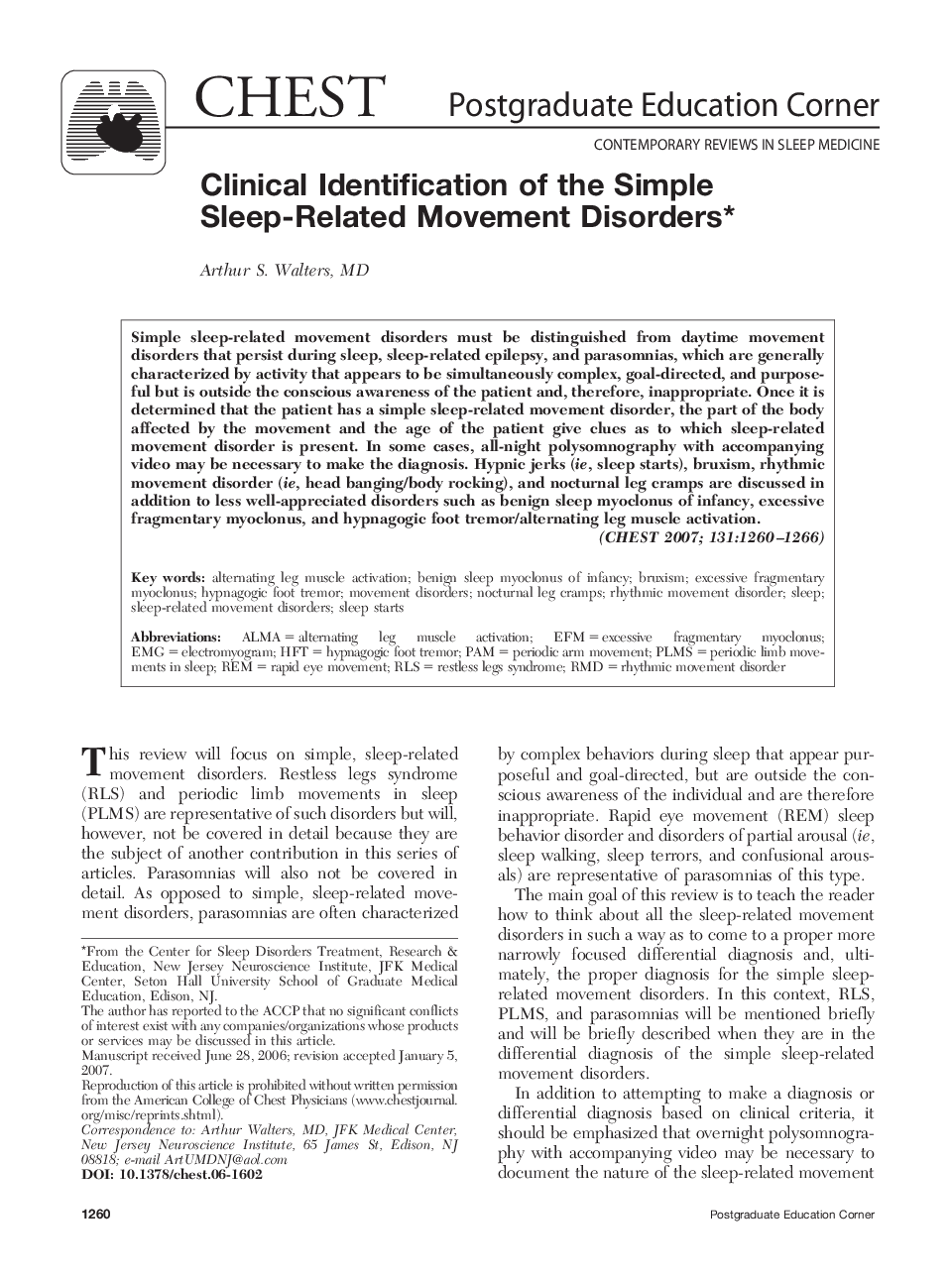| Article ID | Journal | Published Year | Pages | File Type |
|---|---|---|---|---|
| 2905074 | Chest | 2007 | 7 Pages |
Simple sleep-related movement disorders must be distinguished from daytime movement disorders that persist during sleep, sleep-related epilepsy, and parasomnias, which are generally characterized by activity that appears to be simultaneously complex, goal-directed, and purposeful but is outside the conscious awareness of the patient and, therefore, inappropriate. Once it is determined that the patient has a simple sleep-related movement disorder, the part of the body affected by the movement and the age of the patient give clues as to which sleep-related movement disorder is present. In some cases, all-night polysomnography with accompanying video may be necessary to make the diagnosis. Hypnic jerks (ie, sleep starts), bruxism, rhythmic movement disorder (ie, head banging/body rocking), and nocturnal leg cramps are discussed in addition to less well-appreciated disorders such as benign sleep myoclonus of infancy, excessive fragmentary myoclonus, and hypnagogic foot tremor/alternating leg muscle activation.
